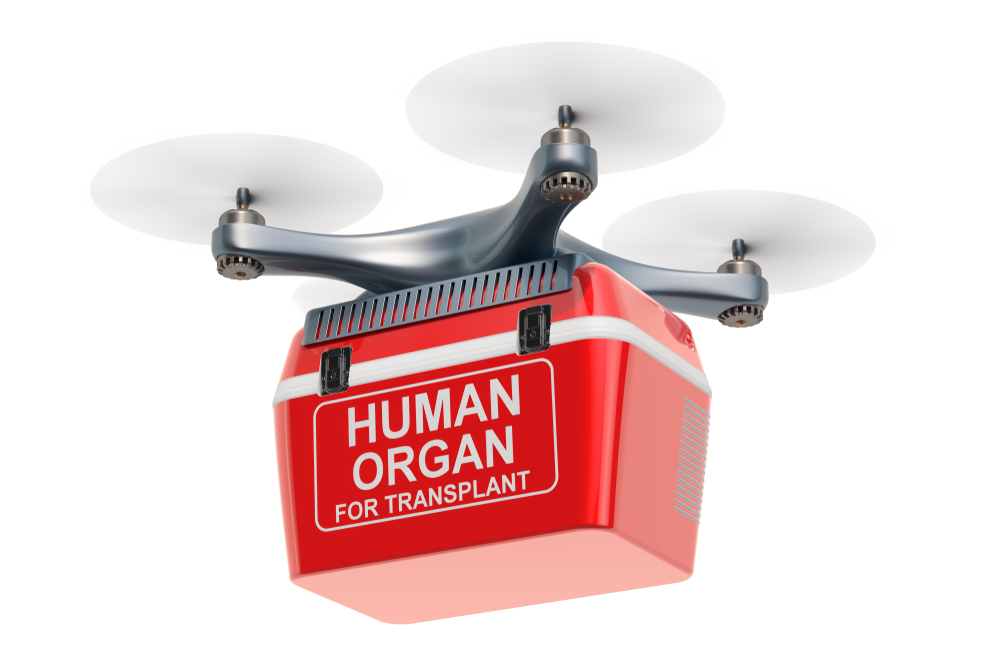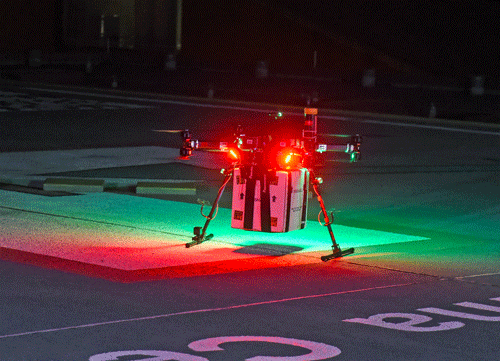Organ delivered by drone for first time
A kidney sent via drone to Maryland Medical Centre still might not be the biggest breakthrough for transplants...


Digital transformation is becoming rife in the world of healthcare, with the likes of the NHS looking to adopt digital system while shifting away from legacy IT. That level of change is happening now, with plenty of tech-shifting projects planned in the near-future.
However, further down the line, cutting-edge technology from artificial intellignece-powered robotics to significant steps in 3D printing evolution that could be set to revolutionise healthcare and perhaps bring about medical techniques that may once have been confined to the pages of science fiction novels.
Case in point: a drone has delivered a donated kidney to surgeons at the University of Maryland Medical Center in Baltimore for a successful transplant.
The drone, which is the first flight of its kind, required a specially designed drone that was able to maintain and monitor the organ as it completed a one-mile journey.
This organ delivery drone was a collaboration between aviation and engineering experts at the University of Maryland (UMD), transplant physicians and researchers at the University of Maryland School of Medicine (UMSOM) and collaborators at the Living Legacy Foundation of Maryland.
The researchers believe this prototype organ transport blazes a trail for the use of drones to expand access to donated organs, improving outcomes for more people in need of transplants.
"This history-making flight not only represents a breakthrough from a technological point of view but provides an exemplary demonstration of how engineering expertise and ingenuity ultimately serve human needs," said Darryll J. Pines, PhD, UMD. "In this case, the need to improve the reliability and efficiency of organ delivery to hospitals conducting transplant surgery."
Get the ITPro daily newsletter
Sign up today and you will receive a free copy of our Future Focus 2025 report - the leading guidance on AI, cybersecurity and other IT challenges as per 700+ senior executives
"As astonishing as this breakthrough is from a purely engineering point of view, there's a larger purpose at stake. It's ultimately not about the technology; it's about enhancing human life."

The kidney in question was for Baltimore resident Trina Glipsy, who said: "This whole thing is amazing. Years ago, this was not something that you would think about."
Prior to the operation, Glipsy had spent eight years on dialysis before undergoing the transplant. While drones have the potential to speed up delivery, these advancements will hardly make much difference to waiting lists, with people often staying on a list for years, depending on their circumstances.
However, another university in the same city, Washington University, may have the answer; 3D printed organs. A team working with bioengineers from Rice University are said to be one step closer to 3D printing organs and tissue.
This radical new innovation could allow scientists to create exquisitely entangled vascular networks that mimic the body's natural passageways for blood, air, lymph and other vital fluids.
The research is featured on the cover of Science magazine and includes a visually stunning proof-of-principle; a hydrogel model of a lung-mimicking air sac in which airways deliver oxygen to surrounding blood vessels. The work was led by bioengineers Jordan Miller of Rice University and Kelly
Stevens of the University of Washington and included 15 collaborators from universities across America.
Bobby Hellard is ITPro's Reviews Editor and has worked on CloudPro and ChannelPro since 2018. In his time at ITPro, Bobby has covered stories for all the major technology companies, such as Apple, Microsoft, Amazon and Facebook, and regularly attends industry-leading events such as AWS Re:Invent and Google Cloud Next.
Bobby mainly covers hardware reviews, but you will also recognize him as the face of many of our video reviews of laptops and smartphones.
-
 Bigger salaries, more burnout: Is the CISO role in crisis?
Bigger salaries, more burnout: Is the CISO role in crisis?In-depth CISOs are more stressed than ever before – but why is this and what can be done?
By Kate O'Flaherty Published
-
 Cheap cyber crime kits can be bought on the dark web for less than $25
Cheap cyber crime kits can be bought on the dark web for less than $25News Research from NordVPN shows phishing kits are now widely available on the dark web and via messaging apps like Telegram, and are often selling for less than $25.
By Emma Woollacott Published